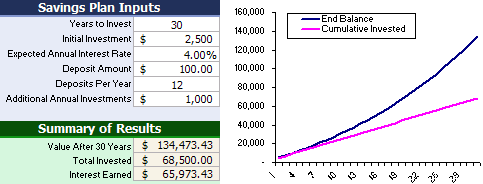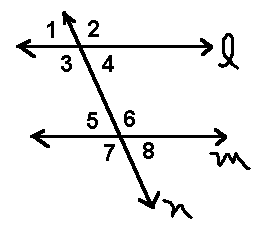The training plan uses something called The 10 Percent Rule. This rules says you should increase your current activity level by 10 percent per week so that you don't over train (during running)
For example, if you were wanting to do a 20 mile run by the end of the summer, and currently you are running around 10 miles per week, would this be possible? Let's say that the end of the summer was 7 weeks away. First, you might prepare by making a Table of how many miles you'll be running each week.
Table
Weeks Equation Miles Ran1 10*1.1 11
2 11*1.1 12.1
3 12.1*1.1 13.3
4 13.3*1.1 14.63
5 14.63*1.1 16.093
6 16.093*1.1 17.7
7 17.7*1.1 19.47
x 10*1.1^x
In the table you can see that each week you increase the Miles Ran by 10%. The equation uses 10% written as a decimal 0.10. Beginning with week 1 you find what is 10% more than 10 miles? A shortcut in using percents, when multiplying by 1 you get the same number so instead of multiplying times 0.10 we can switch it to 1 + 0.10 or 1.10.
The equation column shows 10*1.10= 11, So in week 1 you plan to run 11 miles. Then, in week 2 you start with 11 and find out what 10% more is by doing 11*1.10=12.1 miles. When doing the math you probably noticed that you multiply the total for the week by 1.10. You could keep going with this pattern through week 7 to find the total number of miles by week 7.
Another strategy you may have already thought of is Using an Equation involving exponents. The exponents can help you find out if it is possible to reach the goal by a certain number of weeks. Let's say 6 weeks?
Since you are using an equation you use the starting distance which was 10 miles and the percent increase 1.10, the number of weeks is the exponent function in the equation. Starting distance times 1.1 ^ x weeks
10 miles*1.1^6 weeks = 17.712 miles. (Notice this is close to the value in the table, but not exactly)
10 miles*1.1^7 weeks= 19.47 miles
After 7 weeks you are still slightly less than the 20 mile goal at 19.47 miles. However, if you round up to the nearest tenth of a mile, you're at 19.5 miles. You could Check your Answer by filling in the other values in the table above.
This plan of increasing by a percentage each week can be used for other projects. Right now you're writing 3.5 pages a week, but want to finish a young author's project that is going to be 25 pages long in 4 weeks. If you increase your rate by 10% each week, will you finish by the deadline?
Week Pages per week
Starting 3.5
1 3.5*1.1 3.85
2 3.85*1.1 4.235
3 4.235*1.1 4.6585
4 4.6585*1.1 5.124
Total Pages written 21.4 pages written
Want to learn more about How Percents Work check out this video and other fun activities
on Brain Pop.com Interest % Movie


























